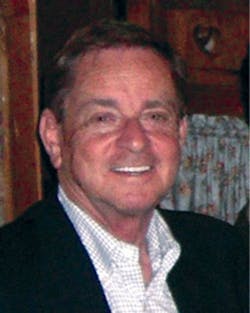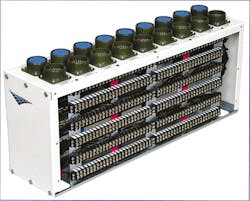Special Report: The right cabling boosts hot-runner, controller efficiency
Injection molders have a range of vendors for hot-runner systems or controllers, but often, molders give little thought as to how best to physically connect the two, says Chuck Emig, president of Powertech Components Inc., San Antonio, a supplier of mold wiring systems.
"Cabling, wiring and the connector types are as critical a component in developing a hot-runner process as the hot-runner system or controller, yet molders tend to treat mold wiring like an extension cord; it's an afterthought," says Emig. The use of incompatible or incorrect cables and connectors is an unrecognized culprit of process failures, he says.
WIRED FOR FAILURE
Incompatible wiring can be the source of heater and thermocouple failure, causing runaway heating, degradation of protective seals and severe mold damage. The two most common causes of hot-runner failure based on the wiring and connector type is cable pullout from the connector socket and pin pushout, both of which can cause dead zones and shorting.
Cable pullout is caused when the cable is not properly secured to the controller or hot runner, which can damage the wires. Pins can also be pushed out from the connector, which can damage the pins and lead to downed heating zones in the hot runner. Emig says standard, off-the-shelf cable styles use formed and stamped light-duty pins that can shake loose from the tool or controller during injection molding, potentially causing loss of heating zone control and pin breakage.
Molders can also misuse a cable, connecting a power cable to a thermocouple or a thermocouple cable to the power, which can render the hot-runner system inoperative. Loose wires and arcing terminals can cause heater failure or lost thermocouples. "A Florida-based injection molder using standard cables said pin push-out problems were so frequent that they needed to contact a service technician five to 10 times per day," says Emig.
Molders can also encounter problems with molds that incorporate unique connections configured by the previous molder. "Molders may not specify a standard regarding their mold connections, letting the mold maker or hot-runner supplier choose. Other molders may develop less- efficient, one-off-type custom solutions to connecting the hot-runner components. Others may have success using standard cables but not operate at optimum efficiency," says Emig. Mold makers that test the hot runner in their facility can use a controller and connection that the molder does not employ, which can lead to panic when the tool doesn't work in the molder's facility.
Finding the mold wiring problem is a time-consuming issue due to the way molds have been wired. Molders have no way to accurately determine which pin and wire are linked to which heater zone. "It can be a maze of tangled, unlabeled wires going into a terminal block, and this can extend the time required to find and resolve the problem," says Emig.
CALLING THE CABLE GUY
Powertech says that when it was founded 20 years ago, it was the first company to offer as standard a terminal block hot-runner wiring system that was prewired and numbered by zone. It produced five-, eight- and 12-zone systems initially, but has expanded its capability to make standard, single-face and stack-mold systems requiring up to 48 zones. Prior to the introduction of Powertech's mold wiring systems, no prewired devices were available with more than 12 zones. Prewired devices that were available were simply empty boxes with the connectors attached to them, says Emig.
Powertech also customizes engineered systems with up to 208 zones. The company has produced hundreds of thousands of wiring types, varying the pin configuration, wiring configuration, type of connector and latching mechanism. It offers its CT and CX line of wiring systems.
The company also manufactures its own line of cable types and connectors that provide a secure contact, eliminate pin pushout (through its Titan manufacturing process) and enable easy matching of wiring to heating zones. Powertech manufactures solid, machined connector pins; produces the cables from stranded wires rather than lower-cost solid wires; and incorporates conduit glands that are independent from the wire for added flexibility and that ensure cable connection. Cables are color-coded for easy identification.
Powertech designs DME and EPIC cables and makes other cable types that use a variety of connectors. It manufactures mold wiring systems designed with four terminal blocks for each mold zone (two blocks for power and two for the thermocouple). "All terminal blocks are numbered by mold zone and all mold connections are prewired to the correct terminal block position for ease of use, which reduces start-up or maintenance times," says Emig. This eliminates "spaghetti" wiring and simplifies connector identification. Pressure screws ensure a secure contact between the wiring and connector type.
Powertech cables, connectors and wiring systems can join the hot runner to high-end or basic temperature controllers, says Emig. The company also repairs and rebuilds cables from any supplier.
Mikell Knights, senior correspondent
Contact:
Powertech Components, 210-521-0799, www.powertechcomponents.com



